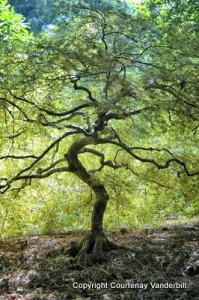
As more Americans embrace an eco-friendly lifestyle these days, the timing couldn’t be better for a new PBS television series called Growing a Greener World, distributed by American Public Television.
Growing a Greener World combines traditional gardening knowledge with a strong focus on sustainability – and provides plenty of cooking and preserving tips for your garden harvests. Each episode tells the story of people making a difference in our world today.
These inspiring stories have ranged from … Pittsburgh’s Phipps Conservatory (called “America’s Greenest Public Garden”) to the Edible Schoolyard Project, spearheaded by local-foods advocate Alice Waters at Martin Luther King, Jr. Middle School in Berkeley, California.
Must-Have Plants: After traveling around the country and touring these fantastic gardens, what “must-have” plants do the hosts and producers of this national television series recommend? Their answers might surprise you.
Executive Producer and Host – Joe Lamp’l: As one of America’s most recognized names in gardening and sustainability, Joe shares his knowledge on NBC’s Today Show, ABC’s Good Morning America and PBS’ Victory Garden. When he’s not running The joe gardener® Company, Joe writes a nationally syndicated newspaper column, books, podcasts and more. He also hosts the Fresh from the Garden series on DIY Network and GardenSMART on PBS. On Twitter: @JoeGardener.
So, when Joe says a plant is worth buying… you listen. One of his favorites is the Japanese maple (Acer palmatum), which he uses around his zone 7 garden, especially when he wants to create focal points.
“Yes, Japanese maple is ubiquitous, but there’s a reason why,” explains Joe. “What other tree does so well with neglect? They’re as happy in containers as they are in the ground. They come in many different varieties and sizes now, with a rainbow of foliage colors. And I love them just as much in winter when they are pruned to give an open airy look.”
To see what Joe means, check out the stunning Japanese maple at the top of this blog post.
The native oakleaf hydrangea (Hydrangea quercifolia), shown above, is another of Joe’s favorites. Along with the stunning fall foliage, Joe likes the beautiful long panicles of flowers that turn from white to pink, and last from summer well into winter, as the handsome bark is exposed.
“What more could you ask from this four-season performer?” asks Joe. “This is a tough performer that responds well to pruning, has exquisite fall color, grows happily in sun or shade, and looks wonderful in a woodland setting. There are also compact varieties that are perfect for any garden.”
Hellebore or lenten rose (Helleborus orientalis) is another plant Joe couldn’t live without – and he encourages folks to forget everything they’ve heard about hellebores being fussy or hard to grow.
“This deer-resistant plant thrives on neglect, puts on a show in the shade, blooms in winter, and rewards you with lots of seedlings every year,” says Joe. “Hellebore reseeds prolifically in a myriad of color combinations and their evergreen foliage is a welcome sight in the dead of winter. This is a plant you’ll be happy to pass along to your gardening friends.”
Former Co-host – Patti Moreno: Also known as “The Garden Girl,” this well-known writer and TV host is an expert in sustainable living for urban environments. She is a contributing editor to Fine Gardening’s GROW magazine, columnist for Organic Gardening Magazine, contributor to Farmer’s Almanac, and host of the PBS series Farmer’s Almanac TV. On Twitter: @pattimoreno On Web: www.gardengirltv.com/
Over the years, Patti has tried hundreds of plants in her zone 6b garden, but she especially loves nasturtium (Tropaeolum minor). “I start them from seed where I want them to grow each spring, “she says. “I never run out of places to sow them. Their edible flowers come in many different varieties, and have a mild peppery flavor. They brighten up salads or fresh-from-the-garden side dishes. Plus, the leaves are edible as well.”
Another plant she loves is sweet potato vine (Ipomoea batatas), which she simply must buy each year. “They mainly come in two colors, a beautiful florescent green and a deep purple,” explains Patti. “Although they may not look like much when first planted, they are truly amazing once they get going and start trailing around in interesting ways.”
Associate Producer – Theresa Loe: Based outside of Los Angeles, Theresa is all about living local, organic and sustainable. This book author and garden writer is an expert in educational school gardens and urban homesteading. She’s also a canning and preserving expert. On Twitter: @TheresaLoe On Web: www.gardenfreshliving.com/
Theresa’s charming cottage garden is zone 10, allowing her to grow many different edibles and cut flowers together. One favorite she likes to grow in containers and hanging baskets is the tender perennial called kent beauty oregano (Origanum rotundifolium ‘Kent Beauty’). The plant really lives up to its name, according to this gardening pro.
“Kent beauty oregano is a real charmer,” says Theresa. “The leaves are heart-shaped with strong architectural veins running throughout. It has bracts that combine creamy white with a lovely chartreuse at the base. The flowers make spectacular flower arrangements and the bracts even hold their color well when dried.”
She’s also crazy about a creeping vine called cup and saucer vine (Cobaea scandens). “This profuse bloomer is a fast grower,” explains Theresa. “It quickly covers walls or fences with lovely cup-shaped flowers, yet it does NOT damage walls as other vines can do. In my area, it dies back each winter. The flowers first open as a light green and slowly darken to a deep purple in the sun. It is a real show stopper and perfect for any unsightly area.”
Theresa grows many different herbs in her garden, but she is particularly fond of Lemon Verbena (Aloysia citriodora).
“This plant is highly prized in the perfume industry for its essential oil,” explains Theresa. “And you need only brush past the foliage on a warm day to see why. One sprig, tucked into a bouquet of fresh-cut flowers will fill the room with sweet lemon fragrance.”
“But I also grow this tender herb for its flavor,” she adds. “On any given summer day, you will find a pitcher of lemon verbena water in my refrigerator. To make your own, simply pick a few 6-inch stems, gently bruise the leaves with your fingers to release the essential oils and drop them into a tall pitcher of ice water. So simple and yet so delicious!”
Learn more about Growing a Greener World:
On Twitter: @GGWTV
On Web: http://www.growingagreenerworld.com/
On Facebook: www.facebook.com/GGWTV
And if Growing a Greener World isn’t showing on your local PBS station, contact them and find out why. These folks have plenty of great gardening and culinary tips you don’t want to miss…







.jpg)













{ 7 comments }
All wonderful plants. Never grew cup & saucer vine, but all of the others have found a home in my garden over the years.~~Dee
Thanks for the great post Teresa. This is one of my favorite sections of your blog and it was fun to get to participate this round!
Hi Dee and Theresa: Thanks for stopping by… Doesn't that cup and saucer vine look lovely? I may have to grow one myself.
Dee, I'm not surprised you've grown most of these plants. You seem to have a rockin' garden…
Theresa, it was a pleasure interviewing you three and thanks again for all the great plant recommendations. Best of luck with the TV show!
Dee & Teresa,
I have to tell you that the cup and saucer vine is a real show stopper here. Everyone that sees it always gasps and says 'WHAT IS THAT BEAUTIFUL FLOWER???" It really is unusual.
Unfortunately, it was not blooming yet when we filmed GGW in my backyard a few weeks. It needs heat to get going. But at least you got to see it here.
Theresa: It's a beauty. I just need to figure out where to plant one in my garden now…
Beautiful pictures! I found this post fascinating. Thanks for sharing all of these wonderful plants with us.
Thanks for stopping by, Natural Family Today. Weren’t those great plants? Something for everyone. Hope to see you again. Teresa
Comments on this entry are closed.
{ 2 trackbacks }